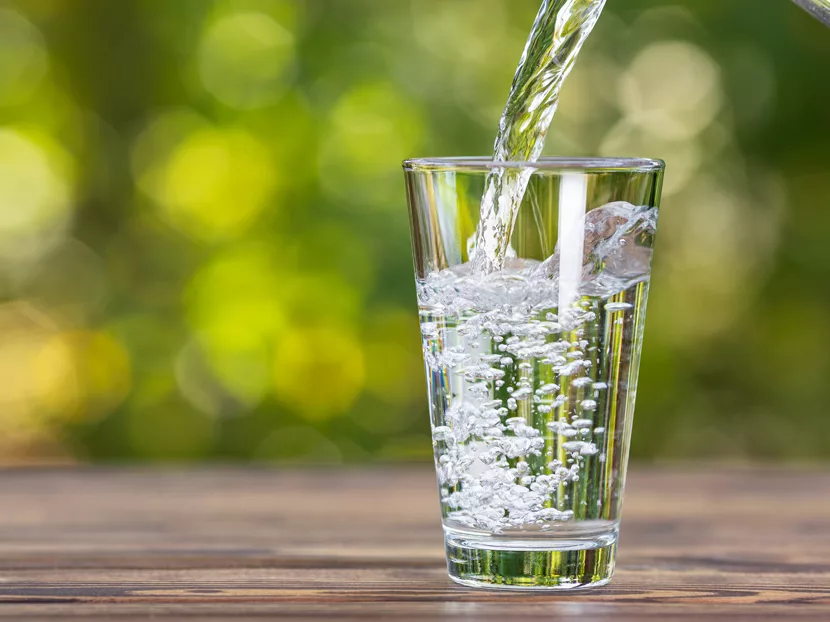Just under a year ago, Plumbing Engineer magazine was among 45-plus professionals from the plumbing, heating, cooling and piping (PHCP) community that attended manufacturer Watts Water’s annual Healthcare Symposium. With a focus on water safety, attendees left with a vast amount of information and a challenge for the PHCP industry to transition from emphasis on education about water safety to a state of water safety operational excellence.
One way that Plumbing Engineer magazine accepted that challenge was by igniting the conversation through market research. Our readers were surveyed via print, e-mail and social media polls. Now, in the face of a global pandemic where many plumbing systems have seen minimal to no use, we find it fitting to release those results and spark further dialogue.
To provide context for some of the survey questions asked, we will revisit some of the highlights of the symposium alongside the survey results.
At the symposium, Frank Sidari, of Special Pathogens Laboratory, implored engineers and facility managers to take a closer look at infection control in water systems in order to reduce risk associated with opportunistic waterborne pathogens. He detailed the need to develop a water safety and management team, including laboratory testing partners, to ensure there are coordinated efforts.
Of the firms and companies that we surveyed, 41% reported that they do have an in-house water safety expert, with 59% stating that they do not. Even fewer reported having an in-house water safety team, with 33% stating “yes” and 67% responding “no.” There was a majority of 56%, however, that reported utilizing outside consultants when it comes to water safety. Surveying also revealed that a majority of respondents make water safety a part of initial project research and planning.
At the symposium, presenter Shatha Salah, of UAB Hospital, detailed the need for frequent plumbing system testing, vigilant documentation of plumbing modifications, and the necessity of multiple water sanitizing approaches such as monochloramine, filters, hyperchlorination and copper-silver ionization.
Our survey respondents were asked what treatment methods their firm or company found successful in water safety planning. Many responses detailed chlorination, UV treatment, and filtration — specifically filtration at point-of-entry, filtration of incoming potable water, and filtration of recirculated water. Other approaches mentioned included thermostatic mixing valves, backflow preventers, and keeping hot water systems between 140F-160F.
Conversely, our survey respondents were asked what treatment methods their firm or company found unsuccessful in water safety planning. Responses listed UV lighting, hyperchlorination, and copper silver ionization — specifically due to the demand of testing and maintenance.
At the symposium, presenter Dr. Williams Rhoads, of Virginia Tech, brought up unintended consequences of water safety treatment and prevention, encouraging engineers to research and consider how materials and chemicals interact when designing systems.
We asked if firms and companies encountered unintended consequences when treating legionella, or other water borne pathogens. An overwhelming majority of 83% responded “no.” Of the 17% that did report facing unintended consequences, the unintended consequences they listed were:
- Inadequate pre-filtering that resulted in higher frequency of filter replacement
- Improper placement of filters that caused pressure drop issues
- Chlorine, Chlorine-Dioxide, Chloramines causing holes in copper piping
- Chlorine, Chlorine-Dioxide, Chloramines being carcinogens and/or having carcinogenic disinfection byproducts
- Super-heat and chemical flush resulting in an increase in Legionella bacteria post flush or an increase in Other Opportunistic Pathogens
- CPVC piping having better anti-microbial properties than Copper over time
- Higher water temperatures degrading copper piping at a given water velocity, requiring lower velocity recirculation loops for higher hot water temperatures
- The hot water temperature, the quicker the chlorine burns off
Dr. Rhoads also pointed out other microbial contaminants, such as adenovirus, calicivirus, and campylobacter jejuni, which researchers are exploring in order to be proactive with future water safety issues on contrast to reactive approaches that have had to be taken with the rise of legionella. Another presenter, Frank Sidari, of Special Pathogens Laboratory, shared contaminants other than legionella that are anticipated to occur in public water systems but are currently not subject to National Primary Drinking Water (NPDW) regulations. Some of those contaminants include pseudomonas aeruginosa, acinetobacter spp., and burkholderia cepacia.
In the survey, we asked if there were waterborne pathogens that firms and companies have noticed are increasing in popularity as they consider water safety. There were 53% that responded “yes” and 47% that responded “no.” We followed up by asking if respondents had utilized treatment approaches different that those for legionella, to which an overwhelming majority of 92% responded “no.”
We closed the survey by asking, “in general, what blind spots do you as a professional feel that the industry is overlooking when it comes to water safety?” There was no singular response. Some of the responses included:
- Understanding of cost effective methods of treating and preventing
- Consideration of central water treatment for drinking water
- Poor training practices
- Acknowledging humidity as a human health and water safety issue
- Lack of point-of-entry firewall protection in potable water supplies to buildings
- Lead requirements for materials do not equal the long-term life expectancy of old material
- Water quality of public services has detrimental consequences on material used in water lines Over-chlorination for some plastic pipe and leaching from metal water lines





